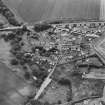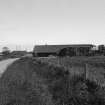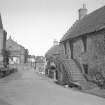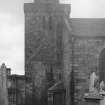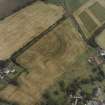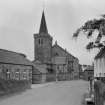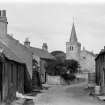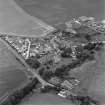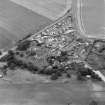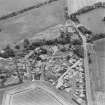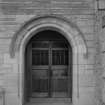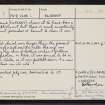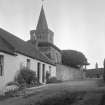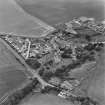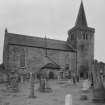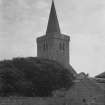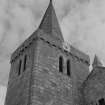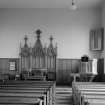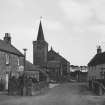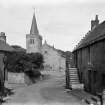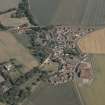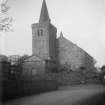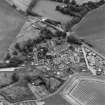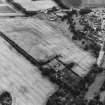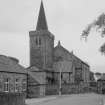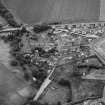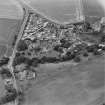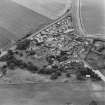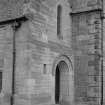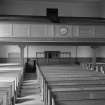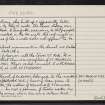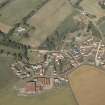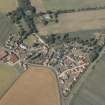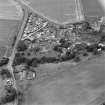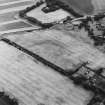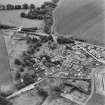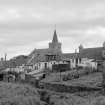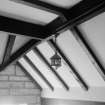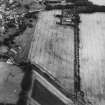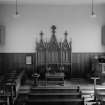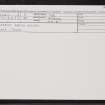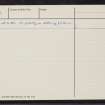Kilrenny Parish Church
Church (19th Century), Tower (15th Century)
Site Name Kilrenny Parish Church
Classification Church (19th Century), Tower (15th Century)
Canmore ID 34136
Site Number NO50SE 3
NGR NO 57526 04859
Datum OSGB36 - NGR
Permalink http://canmore.org.uk/site/34136
- Council Fife
- Parish Kilrenny
- Former Region Fife
- Former District North East Fife
- Former County Fife
NO50SE 3.00 57526 04859
NO50SE 3.01 Centred NO 57549 04859 Burial-Ground
NO50SE 3.02 NO 57510 04859 Lumsdaine Monument
NO50SE 3.03 NO 57545 04857 Beaton Monument
NO50SE 3.04 NO 57501 04883 Mausoleum
(NO 5750 0485) Ch (St)
OS 6" map (1912-38)
The old church was larger than the present one, being 100ft x 50ft over the walls. The roof was supported by two rows of Gothic arches and pillars. After an inspection in 1806, it was found to be in a dangerous state, so it was pulled down and a new church erected on its site.
New Statistical Account (NSA) 1845 (G Dickson)
"The Church of Kilrenny belonged to the monks of Dryburgh, (Berwick 30 SE 2) having been given to them by Ada, the mother of Malcolm IV and William, before 1177...In 1268 a pension of twelve marks was given to the vicar, who in 1336 was a certain John."
The name (Kilrenny) shows it to have been a Culdee establishment but there is much uncertainty as to the saint, preacher or hermit to whom it was dedicated.
W Wood 1887
Tower, parish church, Kilrenny. The parish church, dating from 1808, abuts at its NW corner on a bell tower, the only remnant of the former church, which extended further W than the present one. The tower has always been a NW tower and was probably built about the same time as that of St Michael's Church, Cupar (NO13NE 11) in 1415.
It is of coursed rubble, 19 3/4 x 14 1/2 ft externally. The N window at ground level is an insertion but the lancet doublets in each wall of the bell chamber are original. The parapet dates from the 16th century and the slated spire is probably, but not certainly, contemporary. An archway, now built up, opened on to the nave, and a second archway, also built up and apparently later, opened on to the N aisle. The lower storey was once vaulted. A turnpike, ascending to the parapet, has been inserted in the NW angle. The roof raggle on the outer face of the S wall does not appear to be original. Sepulchral monuments in the church are dated 1592, 1672, and late 17th century.
Local fishermen call the tower St Irnie. It is suggested that this is a corruption of St Irenaeus, Bishop of Lyons. Others would connect it with Ringan (ie St Ninian) or with St Ethernan.
RCAHMS 1933
Consecrated July 1243. Dedicated to St Ethernannus.
Information from D C Baird, undated; Pontificale Ecclesiae S Andreae
As described by RCAHMS. The dedication of the old church is not certain but probably as stated by D C Baird (H MacNab, minister).
Visited by OS (WDJ) 30 August 1968
Field Visit (21 June 1927)
Tower, Parish Church.
The parish church, an oblong building dating from 1808, abuts at its north-west angle on a bell-tower, the only remnant of the former church, which extended farther west than the present structure. The tower has always been a north-west tower, like that of St. Michael's Church, Cupar, which was erected in 1415, and the two probably belong to about the same time.
It is built of coursed rubble and measures externally 19 ¾ by 14 ½ feet. While the north window at ground-floor level is an insertion, the lancet doublets in each wall of the bell chamber are original. The parapet, borne on separate moulded corbels of two members, dates from the 16th century, and the slated spire is probably, but not certainly, contemporary. The tower has opened on to the nave by an archway which, though built up, can still be traced, and on to the north aisle by a second archway, apparently later and also filled in. The capitals of these archways are boldly moulded. The lower storey has at one time been vaulted. A turnpike, ascending to the parapet, has been inserted in the north-west angle. The roof-raggle on the outer face of the south wall does not appear to be original.
SEPULCHRAL MONUMENTS. - The Beaton burial-enclosure [NO50SE 3.03] at the east end of the church dates from the later 17th century. The front, which faces east, is enriched with Ionic shafts at the ends and on either side of the entrance. In the back wall is placed an armorial panel, now very weather-worn, enclosed by a bolection-moulded surround. The helm has for crest an otter's head erased. The supporters are otters. The shield bears: Quarterly, 1st and 4th, a fess between three lozenges; 2nd and 3rd, on a chevron an otter's head erased. A label below the shield bears the motto, DE[B]ONN[AIRE]. A cartouche beneath bears initials, two of whichmay be read as M.B., while the others are totally illegible.
At the vestry door lies a tombstone, measuring 5 feet 6 inches by 2 feet 4 inches, which is dated 1592, and bears on a shield-shaped panel the initials T.S. and A.S. Near the forestair on the north of the church is the table-stone of Robert Ford who died in 1672. It measures 6 feet 2 inches by 3 feet 3 inches, and has on the upper part representations of a ship, an astrolabe, and a quarterstaff.
NOTE. - The church tower was used as a landmark by fishermen, who called it "St.Irnie” (1). It has been suggested that the name is a corruption of that of St. Irenaeus, Bishop of Lyons. Others would connect it with Ringan (i.e. St. Ninian) or with St. Ethernan. Possibly there is no saint's name in question at all. The word may be merely the old Gaelic form irnaidhe (Mod. Gaelic ùrnuigh) "a prayer", formerly also used in the sense of "oratory” (2).
RCAHMS 1933, visited 21 June 1927.
(1) Stat. Acct., i (1791), p. 409; Wood's East Neuk of Fife, p. 368. (2) Watson's Celtic Place Names of Scotland, pp. 519-20.
























































